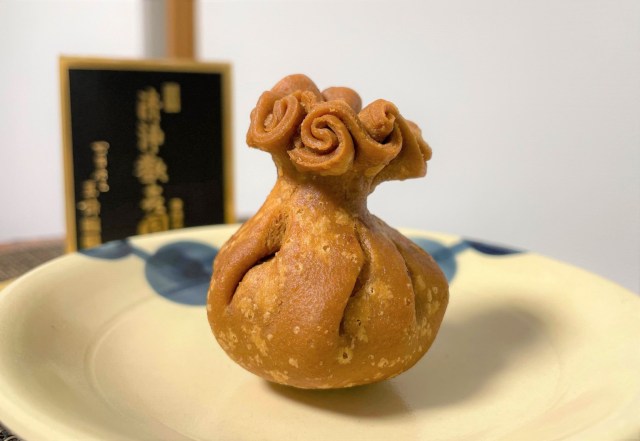
Edo period confectionery store learnt the secret recipe from a monk on a mountain in Kyoto.
Japan is known for its traditional sweets, covering everything from hand-moulded wagashi through to dango, sweet rice balls on a stick. However, not many people know about a very special sweet that preceded them all, with a history so steeped in tradition it can be traced back to the Nara Period (710-794).
Called Seijokankidan, which loosely translates to “Pure Delight Company”, this treat can only be purchased at one store in all of Japan: Kameya Kiyonaga. Founded in 1617, at the beginning of the Edo Period (1603-1868), this Kyoto-based confectionery store has been preserving ancient manufacturing processes as part of their “1,000-year-sweets” range.
Seijokankidan ‘s history far exceeds 1,000 years, though, as it was first introduced to Japan through a Japanese envoy to China, who brought Chinese treats called “Karakudamono” into Japan, along with Buddhism. These treats were once used as an offering in Buddhist sects and only eaten by nobility, but now, thanks to Kameya Kiyonaga, even us common folk can enjoy them, and that’s what one of our common reporters, K. Masami, did recently.
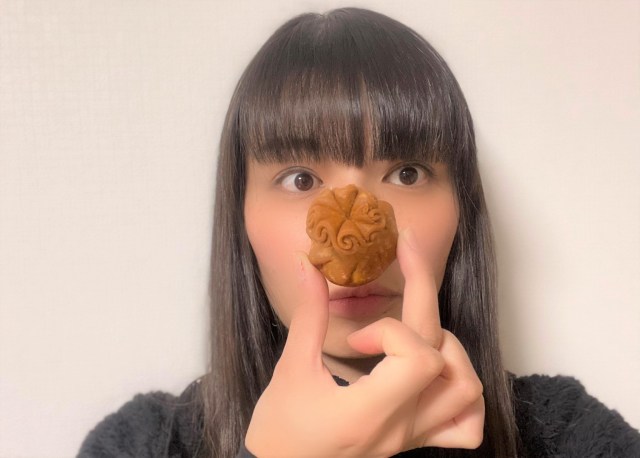
Masami has tried a lot of sweets in her time, but never before had she seen a treat like this. It certainly didn’t look like something you’d see in modern-day Japan, and that was definitely part of its appeal.
▼ Straight out of China’s Tang dynasty (618-907).
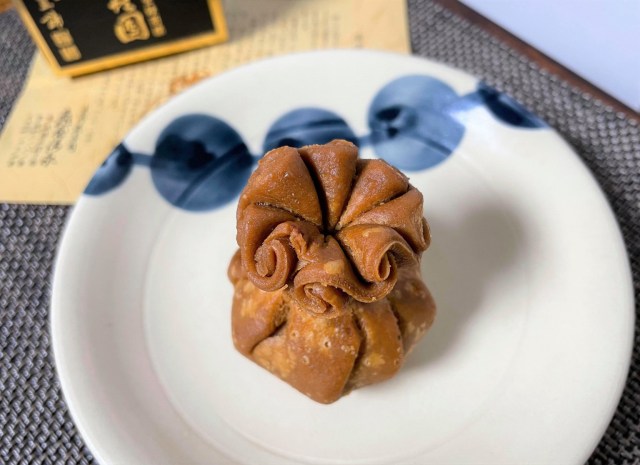
According to Kameya Kiyonaga, Seijokankidan, also known as “danki”, or “odan” for short, is one of eight karakudamono, or tougashi (Chinese sweets) brought over from China, and it’s what helped give birth to wagashi (Japanese sweets) as we know them today.
▼ The Seijokankidan comes with a note detailing its long history.

The box it comes in has a very Nara-esque feel to it, with a plain black-and-gold colour scheme often seen on items owned by nobility.
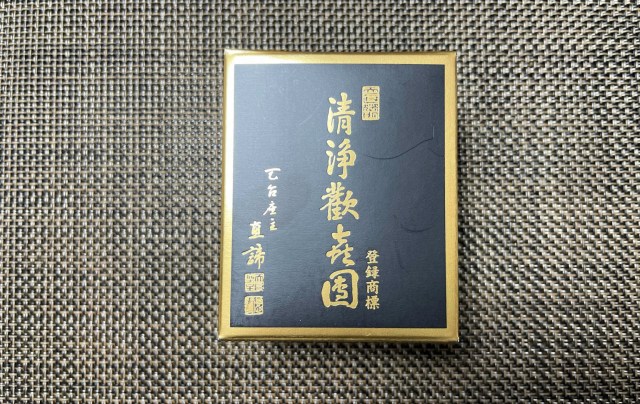
Kameya Kiyonaga makes these sweets in the same way they were made over a thousand years ago, by wrapping a rice-flour pastry around a bean paste filling, and then frying it like a dumpling.
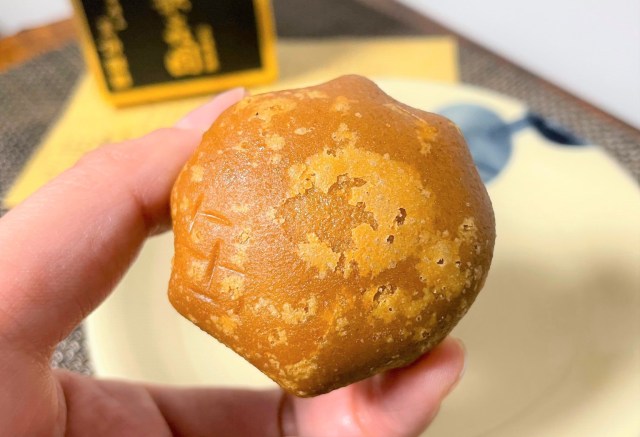
Sesame oil is used for frying, and that’s what Masami smelt as soon as she took this out of the box. While she wondered if this was the same fragrance that filled the senses of nobility in the Nara Period, she gently raised the morsel to her mouth and gave it a bite.
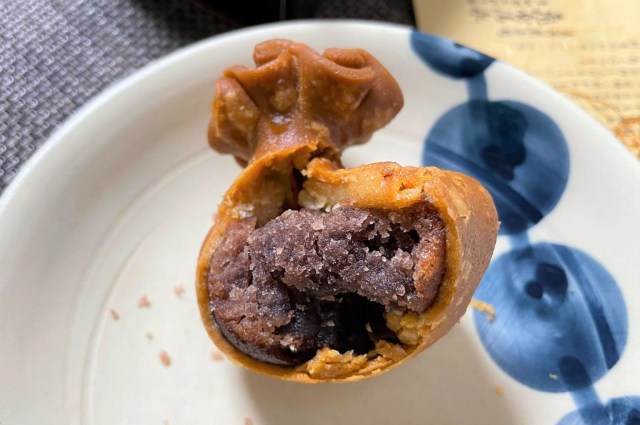
It was definitely crunchier than the sweets she’s used to, but the real surprise was the centre, which contained a bean filling like none she’d ever tasted before. In trying to describe the flavour, the first thing that came to her mind was a Buddhist altar. It was intensely fragrant, like incense, and looking at the note inside the box, she found it contained “seven kinds of aromatics that represent cleansing and purification“.
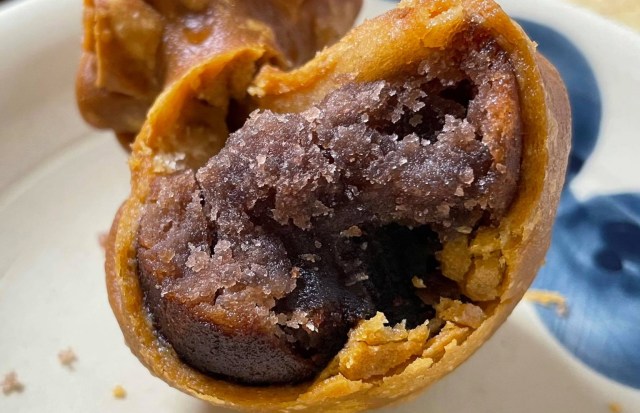
It was spicy, peppery, with notes of cinnamon and other aromas, that at first made her want to push the sweet away, but with every bite she found herself wanting more and more. As she looked for further information about what she was eating, she discovered liquorice was often used in the filling, but as for what the other ingredients were, that remained a mystery to her.
Kameya Kiyonaga says it learned the secret method for making odan from high ranked monks on Kyoto’s Mt Hiei, and the tougashi is still used as offerings for shrines and temples today. It’s considered to be the country’s oldest sweet, and also one of the few to retain its original appearance, making it an incredibly special treat with long ties to the past.
▼ The sweet is closed with eight knots that represent the eight petals of the lotus flower, a Buddhist symbol of purity and enlightenment.
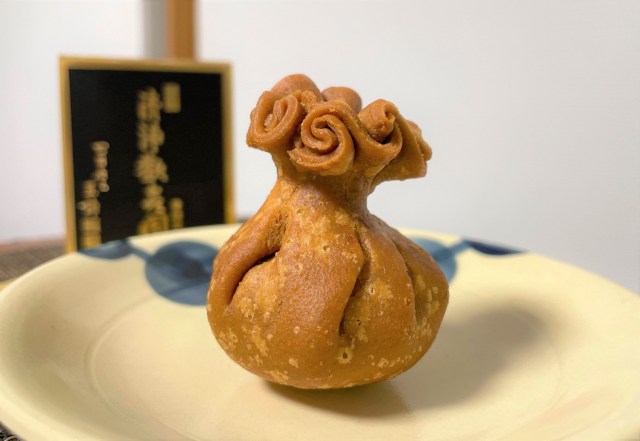
With eight lotus petals on the outside and seven secret spices on the inside, this is a sweet with a long and storied history unlike any other you’ll find in all of Japan. It can be purchased online, at the company’s main store, or at branches at Isetan and Takashimaya department stores in Kyoto, where it’s sold on its own for 550 yen (US$5.25) plus tax or in sets of two or five for 1,200 yen and 2,850 yen respectively.
It’s a sweet way to experience traditional Japan, and if that’s got you hungry for more Japanese history, you might want to check out this crowdfunding campaign, which aims to bring the ancient sweetener amazura back on the market after years of being lost to the annals of time.
Store Information
Kameya Kiyonaga Main Store / 亀屋清永本店
Address: Kyoto-fu, Kyoto-shi, Higashiyama-ku Gionmachi Minamigawa 534
京都府京都市東山区祇園石段下南
Hours: 8:30a.m.-5:00 p.m.
Website
● Want to hear about SoraNews24’s latest articles as soon as they’re published? Follow us on Facebook and Twitter!

No hay comentarios:
Publicar un comentario